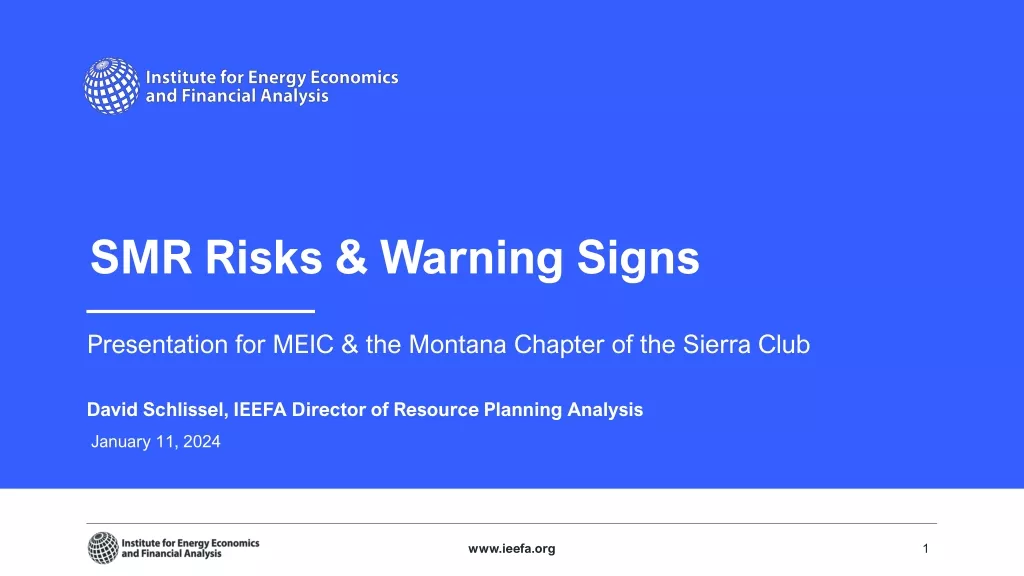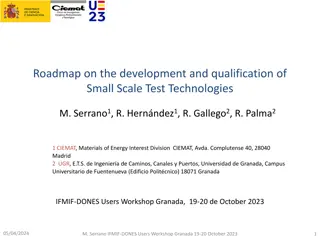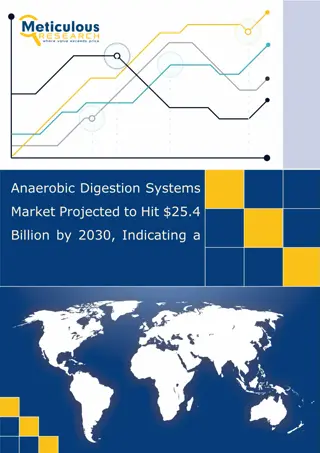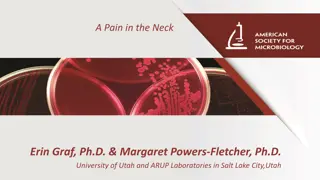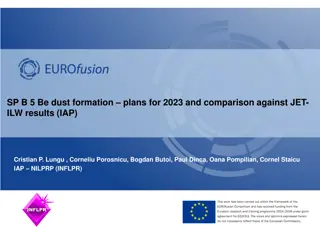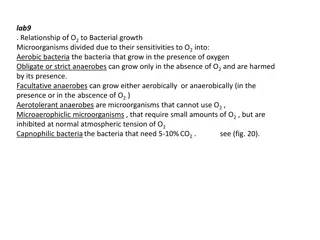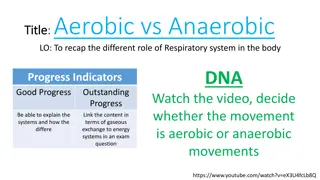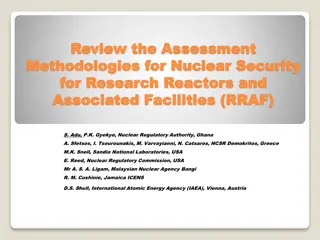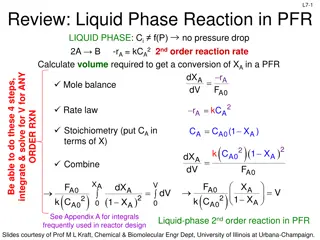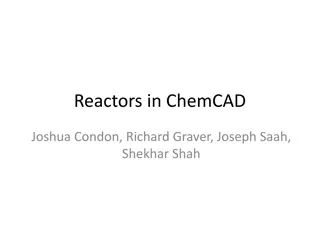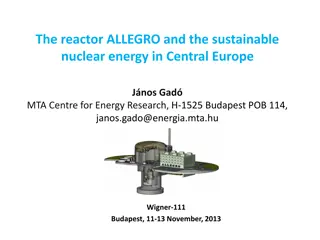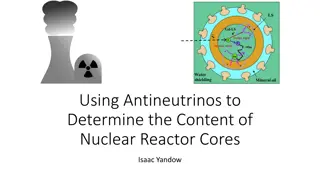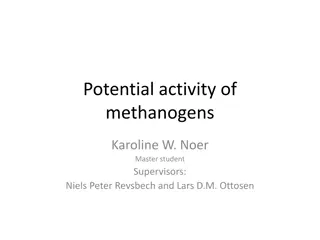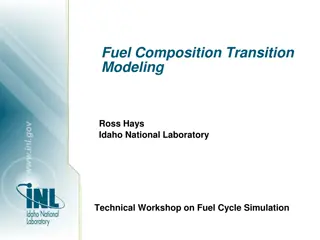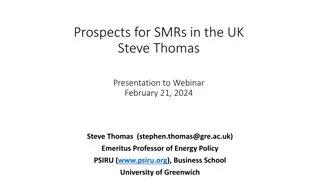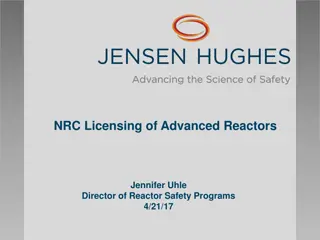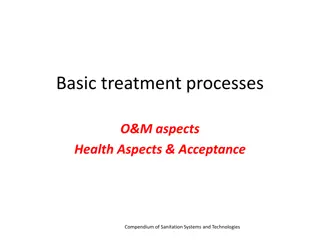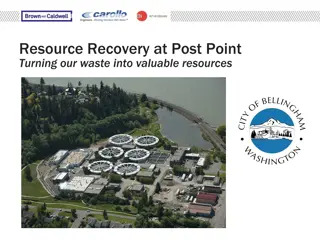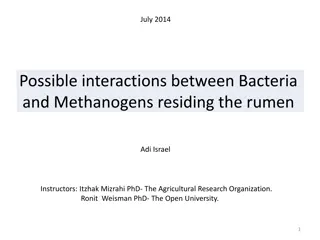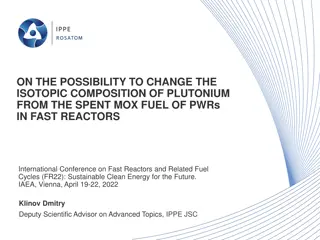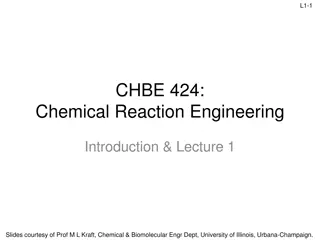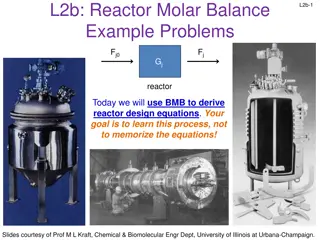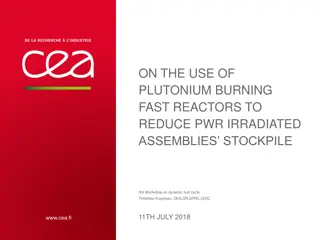Anaerobic Digestion Systems Market Projected to Hit $25.4 Billion by 2030
The increasing adoption of organic feedstock for biogas generation and the integration of advanced technologies into anaerobic digestion systems are expected to create market growth opportunities. However, the operational issues with anaerobic digestion systems are major challenges for the players o
0 views • 4 slides
Risks and Warning Signs of Small Modular Reactors (SMRs)
Small Modular Reactors (SMRs) are nuclear reactors with a power capacity of 300 megawatts or smaller. Despite potential benefits, there are significant risks associated with SMRs, including cost overruns, schedule delays, lack of construction, and high power prices. The industry's track record raise
4 views • 22 slides
Development and Qualification of Small Scale Test Technologies in Structural Engineering
Small Scale Test Technologies (SSTT) play a crucial role in determining the mechanical properties of materials used in engineering applications. This roadmap focuses on the importance of testing relevant volumes to ensure transferability to real-world structures. It discusses the need for consistent
0 views • 26 slides
Understanding Biogas Production from Kitchen Waste for Green Energy Solutions
Biogas, a methane-rich gas produced from organic waste, offers an eco-friendly energy solution through anaerobic digestion. Learn about its composition, advantages, and disadvantages, as well as the biochemical reactions involved in its production. Discover the various modes of operation and types o
7 views • 22 slides
Aspen Simulation of Steam Reforming and Haber-Bosch Processes in Kinetics Reactors
Aspen simulation showcases the kinetics reactors for steam reforming of natural gas and the Haber-Bosch process for ammonia production. Steam reforming is highly endothermic, producing hydrogen and CO, while the Haber-Bosch process is exothermic, crucial for ammonia synthesis. The RPlug reactor and
3 views • 26 slides
Anaerobic Bacterial Infections: Overview and Clinical Implications
Anaerobic bacterial infections are caused by bacteria that do not require oxygen for growth, posing challenges in diagnosis and treatment. This article delves into the types of anaerobic bacteria, their role in human infections, and common clinical presentations such as abscess formation. Gram-negat
2 views • 24 slides
Anaerobic Digestion Systems Market Projected to Reach $25.4 Billion by 2030
The anaerobic digestion systems market has been growing steadily in recent years due to increased awareness of the benefits of renewable energy, government incentives and regulations, and the rising cost of fossil fuels. Anaerobic digestion is a sustainable method of waste management and renewable e
0 views • 4 slides
Small Modular Reactors Market by Size, Share, Forecasts, & Trends Analysis
The small modular reactors market is projected to reach $6.14 billion by 2030, at a CAGR of 2.4% during the forecast period of 2023 to 2030\n
1 views • 4 slides
Understanding Anaerobic Infections: A Case Study in Clinical Microbiology
In this case study, two patients present with fever, neck pain, and previous misdiagnoses of viral pharyngitis. Blood cultures reveal anaerobic growth, with Gram stain showing pleomorphic Gram-negative rods. Anaerobic cultures require specialized conditions for growth, such as anaerobic glove box in
1 views • 14 slides
Understanding Fluid Mixing in Chemical Reactions
The problems associated with fluid mixing during reactions are crucial for fast reactions in both homogeneous and heterogeneous systems. These issues involve the degree of segregation of the fluid and the timing of mixing. Concepts like RTD are intertwined with fluid mixing, affecting the behavior o
1 views • 46 slides
Investigating Be Dust Generation for Fusion Reactors
Investigate the properties of beryllium (Be) dust particles generated using milling techniques for fusion reactors. The study involves analyzing particle size, morphology, crystal orientation, and thermal behavior of Be dust in air and water environments. Laboratory experiments will be conducted to
2 views • 5 slides
Understanding Anaerobic Bacterial Growth and Culturing Methods
Anaerobic bacteria have specific sensitivities to oxygen, with categories such as aerobic, obligate anaerobes, facultative anaerobes, aerotolerant anaerobes, microaerophiles, and capnophilic bacteria. Methods like Anaerobic Jar and GasPak system are used for cultivating anaerobic bacteria, ensuring
0 views • 7 slides
Celebrating the Legacy of Magnox Reactors at Wylfa Nuclear Power Station
Explore the rich history and contributions of Magnox reactors at Wylfa Nuclear Power Station, from their pioneering role in electricity generation to the upcoming closure of the last reactor. Join us for insightful discussions on reactor design, waste management, and the future of nuclear energy. Di
0 views • 8 slides
Understanding Aerobic and Anaerobic Exercise Systems
The content discusses the differences between aerobic and anaerobic exercise, detailing how each system utilizes oxygen or stored energy for energy production. It explores the role of gaseous exchange in energy systems and relates it to the respiratory system's function. Additionally, it covers the
0 views • 9 slides
Reactor Sizing and Conversion in Chemical Engineering
This chapter explores the sizing of Continuous Stirred Tank Reactors (CSTR) and Plug Flow Reactors (PFR) using conversion values and overall conversion. It covers the definition of conversion, batch reactor design equations, design equations for flow reactors, and more. The content delves into the m
0 views • 17 slides
Understanding Anaerobic Respiration in Cell Biology - Year 10 Science Lesson
Exploring the concepts of anaerobic respiration in cell biology with Ms. Merrall. Learn about the differences between aerobic and anaerobic respiration, muscle fatigue, and oxygen debt. Discover the importance of respiration for survival, building upon previous knowledge and linking to various topic
0 views • 20 slides
Comprehensive Review of Methodologies for Nuclear Security in Research Reactors and Facilities
This review assesses methodologies for nuclear security in Research Reactors and Associated Facilities (RRAF). It focuses on applying a performance-based framework to evaluate the protection of nuclear materials and facilities. A case study on the Vulnerability of Integrated Security Analysis method
2 views • 17 slides
Challenges in Security Analysis of Advanced Reactors
Analyzing the security aspects of advanced reactors involves considerations such as physical protection, facility sabotage, nuclear terrorism, cyber vulnerabilities, and emerging technologies. Highlighted risks include the need to protect nuclear material, insider threats, terrorist attacks causing
0 views • 8 slides
Wavelet-based Scaleograms and CNN for Anomaly Detection in Nuclear Reactors
This study utilizes wavelet-based scaleograms and a convolutional neural network (CNN) for anomaly detection in nuclear reactors. By analyzing neutron flux signals from in-core and ex-core sensors, the proposed methodology aims to identify perturbations such as fuel assembly vibrations, synchronized
3 views • 11 slides
Reactor Design Principles for Liquid and Gas-Phase Reactions
This material covers the design principles for liquid and gas-phase reactions in continuous flow reactors such as PFR (Plug Flow Reactor) and PBR (Packed Bed Reactor). It includes calculations for volume required to achieve a specific conversion, catalyst weight needed, and considerations for ideal
0 views • 21 slides
Understanding Reactors in ChemCAD: Models and Examples
ChemCAD offers various reactor models such as stoichiometric and equilibrium reactors for simulating chemical processes. Engineers can choose the appropriate model based on the reaction type and accuracy needed. Explore different reactor types through examples and process flow diagrams to enhance yo
0 views • 21 slides
Advancing Sustainable Nuclear Energy in Central Europe with Fast Reactors
Explore the potential of G4 fast reactors for advancing sustainable nuclear energy in Central Europe. Learn how fast neutron spectrum reactors can help address uranium stock depletion, waste elimination, and fuel cycle closure. Discover the regional long-term solution proposed for V4 countries and t
0 views • 12 slides
Utilizing Antineutrinos for Nuclear Reactor Core Monitoring
Plutonium can be clandestinely removed from reactors for nuclear weapons, with neutrinos emitted by reactors providing insights into core contents. Neutrino detectors require high efficiency, energy resolution, and strategic placement. Although detectors meeting these criteria exist, they are not al
1 views • 8 slides
Potential Activity of Methanogens in Anaerobic Digesters Study
Investigating the potential activity of methanogens in anaerobic digesters with and without hydrogen addition. The goal is to estimate methane production and compare upgrading potential using a specific assay method. The study involves collecting material from reactors, incubating in specific gas mi
0 views • 10 slides
Models for On-line Control of Polymerization Processes: A Thesis Presentation
This presentation delves into developing models for on-line control of polymerization processes, focusing on reactors for similar systems. The work aims to extend existing knowledge on semi-batch emulsion copolymerization models, with a goal of formulating models for tubular reactors. Strategies, ba
0 views • 16 slides
Fuel Composition Transition Modeling in Two-Stage Recycling Reactors
Modeling the transition of fuel composition in a two-stage recycling reactor scenario poses a unique challenge that previous versions of VISION were unable to address. By tracking fuel mass and isotopics through various stages of the fuel cycle, VISION now enables the modeling of reactors with recip
0 views • 15 slides
Insights on Small Modular Reactors (SMRs) in the UK
Steve Thomas presents an overview of Small Modular Reactors (SMRs), highlighting the challenges and misconceptions surrounding their development and commercial availability. The discussion covers various claims about SMRs, their categorization, and the current status of Advanced Modular Reactors (AM
0 views • 17 slides
NRC Licensing of Advanced Reactors and NuScale Small Modular Reactor Design Overview
Overview of NRC licensing process for advanced reactors, including a focus on Small Modular Reactors under 10 CFR Parts 50 and 52. Details on licensing options, such as Conceptual Design Assessment and Prototype Plants, are discussed. NuScale's Small Modular Reactor design, featuring passive safety
4 views • 12 slides
Overview of Chemical Reactor Design and Operation
Chemical reactor design involves studying the rates and mechanisms of chemical reactions, as well as the design of reactors for these reactions on a commercial scale. This field combines principles from thermodynamics, chemical kinetics, fluid mechanics, mass transfer, heat transfer, and economics t
0 views • 12 slides
Operation and Maintenance Aspects of Sanitation Systems
Maintenance of basic treatment processes, settlers, and anaerobic baffled reactors (ABR) is crucial for efficient functioning. Regular sludge removal, careful handling of pathogenic organisms, and monitoring scum levels are essential tasks. Anaerobic systems like ABR require a start-up period and sp
0 views • 32 slides
Resource Recovery at Post Point: Turning Waste into Valuable Resources
Post Point WWTP is undergoing improvements to address the aging solids stream train incinerator and explore opportunities for resource recovery through anaerobic digestion. The project aims to recover resources, minimize social impacts, and meet climate action goals by utilizing biosolids and biogas
0 views • 24 slides
Interactions Between Bacteria and Methanogens in the Rumen
The rumen, an anaerobic fermentation chamber in ruminant animals, houses a diverse microbial community including bacteria, fungi, protozoa, methanogenic archaea, and phages. Methanogens play a crucial role in methane production using fermentation end products. Research aims to explore evidence of in
0 views • 21 slides
Heart Rate Zones and Effective Exercise Strategies
Understanding your target heart rate zone is crucial for optimizing the benefits of your workout. This content delves into different heart rate training zones for ages 15-19, Tabata anaerobic workout sets, and circuit training exercises, providing insights on how to exercise effectively within your
0 views • 10 slides
Introduction to Chemical Reaction Engineering (CRE)
Chemical Reaction Engineering (CRE) focuses on studying the rates and mechanisms of chemical reactions, as well as designing reactors for these reactions. The field involves understanding balances in terms of molar flow rates, mole balances, rate laws, stoichiometry, and membrane reactors. Membrane
0 views • 20 slides
Innovations in Reprocessing Spent MOX Fuel for Sustainable Nuclear Energy
Discussion at the FR22 Conference focuses on the potential for fast reactors to modify the isotopic composition of plutonium from spent MOX fuel of PWRs. By utilizing fast reactors like BN-800, countries can alter the fissile isotopes in plutonium, enabling its reuse in thermal reactors and effectiv
0 views • 8 slides
Anaerobic Fermentation for Biofuel Production: Uses and Applications
Anaerobic fermentation is a key process converting biomass into biogas without oxygen. Biofuels, such as bioethanol and biodiesel, derived from biomass like agricultural and industrial waste, offer renewable and environmentally friendly energy alternatives. The applications of anaerobic fermentation
0 views • 11 slides
Chemical Reactor Design: Unsteady State and Nonisothermal Reactors
Developing energy balances for unsteady state and nonisothermal reactors is essential for designing efficient chemical reactors. The energy balances involve terms such as heat flow, work done, energy accumulation, and mass flow, which impact the reactor's performance. By considering factors like pha
0 views • 29 slides
Introduction to Chemical Reaction Engineering
Chemical Reaction Engineering (CRE) is crucial for understanding how chemical reactors operate in various processing operations. This field involves reactor design by integrating factors such as thermodynamics, kinetics, fluid mechanics, heat transfer, and economics. CRE aims to effectively design a
0 views • 16 slides
Reactor Design Equations: Basics and Applications
This material covers the foundational concepts of reactor design equations, focusing on molar balance in batch reactors, continuous stirred tank reactors (CSTRs), and plug flow reactors (PFRs). Through detailed explanations and illustrative examples, you will gain a comprehensive understanding of ho
0 views • 20 slides
Plutonium Burning Fast Reactors for Reducing PWR Stockpile
Workshop presenting the utilization of plutonium burning fast reactors to decrease PWR irradiated assemblies stockpile through the CAPRA project. The performance and impact on plutonium inventory are assessed, highlighting the potential reduction and the additional reprocessing and manufacturing req
0 views • 16 slides

